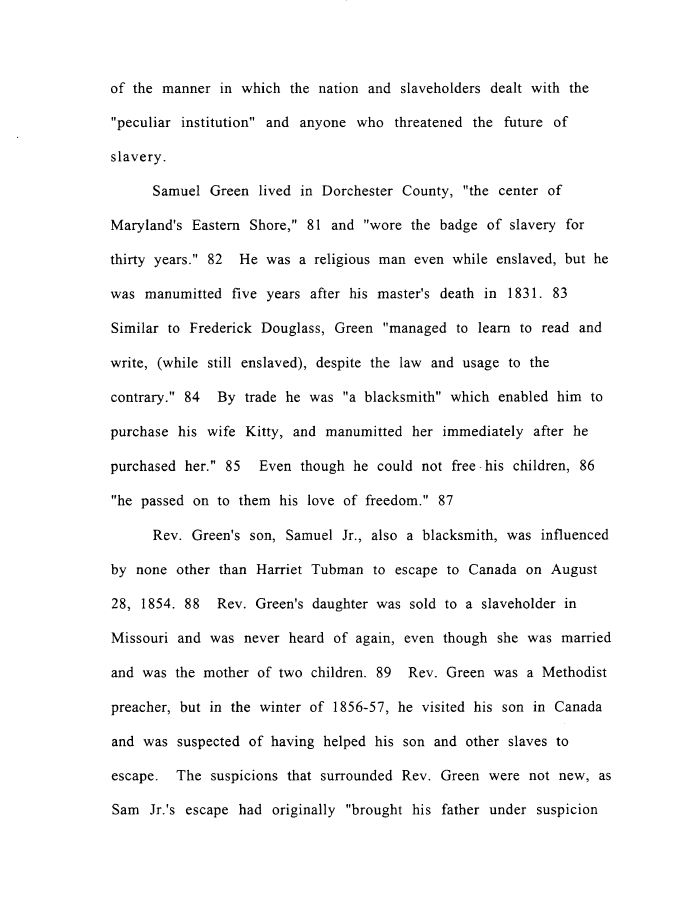 |
||||
|
TASK FORCE TO STUDY THE HISTORY AND LEGACY OF SLAVERY IN MARYLAND (Final Report) 1999/12/31 MdHR 991422 MdHR 991422, Image No: 335 Print image (44K) |
 |
||||
|
TASK FORCE TO STUDY THE HISTORY AND LEGACY OF SLAVERY IN MARYLAND (Final Report) 1999/12/31 MdHR 991422 MdHR 991422, Image No: 335 Print image (44K) |
| of the manner in which the nation and slaveholders dealt with the "peculiar institution" and anyone who threatened the future of slavery. Samuel Green lived in Dorchester County, "the center of Maryland's Eastern Shore," 81 and "wore the badge of slavery for thirty years." 82 He was a religious man even while enslaved, but he was manumitted five years after his master's death in 1831. 83 Similar to Frederick Douglass, Green "managed to learn to read and write, (while still enslaved), despite the law and usage to the contrary." 84 By trade he was "a blacksmith" which enabled him to purchase his wife Kitty, and manumitted her immediately after he purchased her." 85 Even though he could not free his children, 86 "he passed on to them his love of freedom." 87 Rev. Green's son, Samuel Jr., also a blacksmith, was influenced by none other than Harriet Tubman to escape to Canada on August 28, 1854. 88 Rev. Green's daughter was sold to a slaveholder in Missouri and was never heard of again, even though she was married and was the mother of two children. 89 Rev. Green was a Methodist preacher, but in the winter of 1856-57, he visited his son in Canada and was suspected of having helped his son and other slaves to escape. The suspicions that surrounded Rev. Green were not new, as Sam Jr/s escape had originally "brought his father under suspicion |